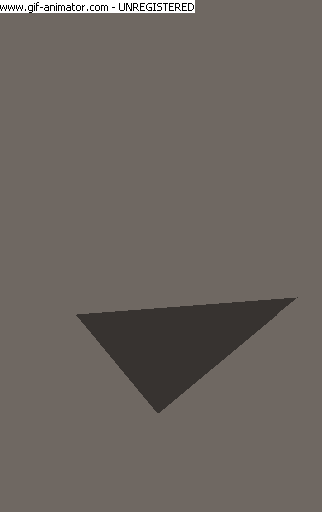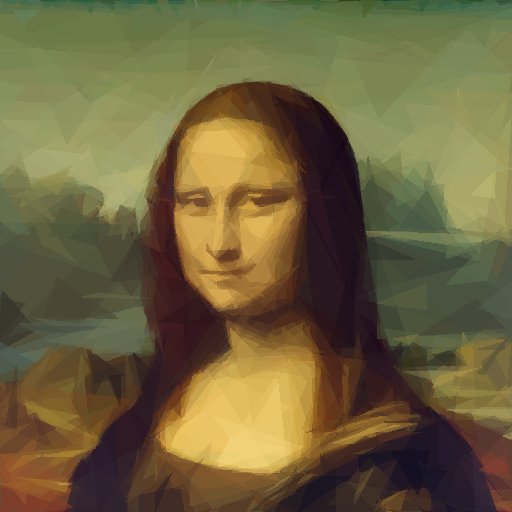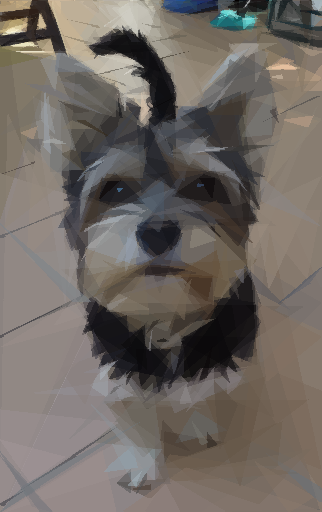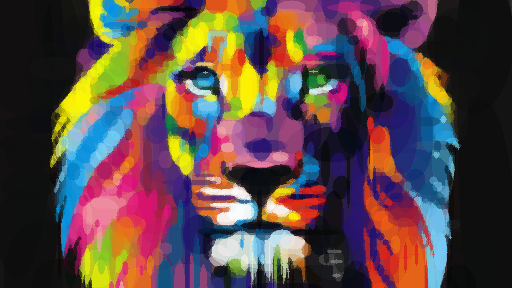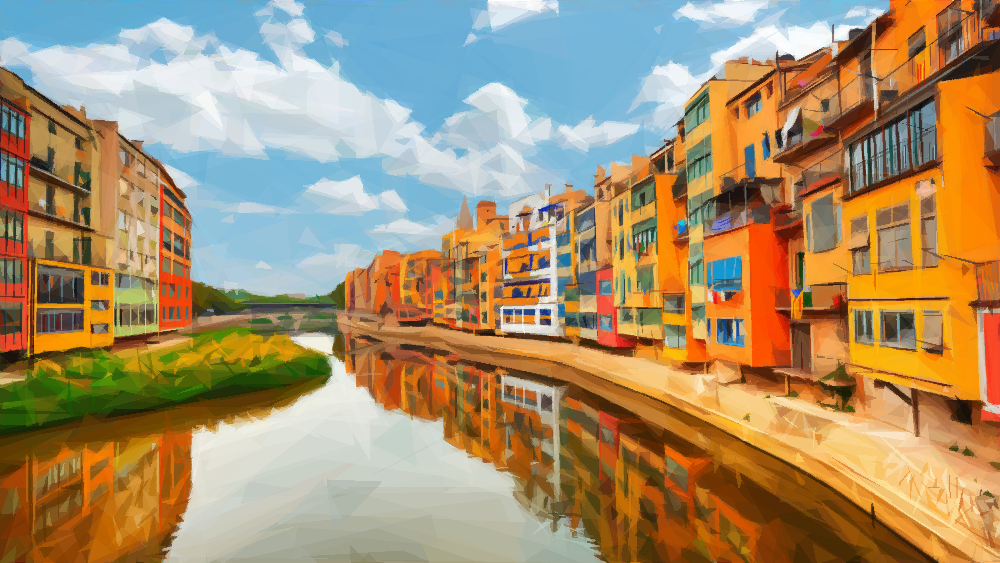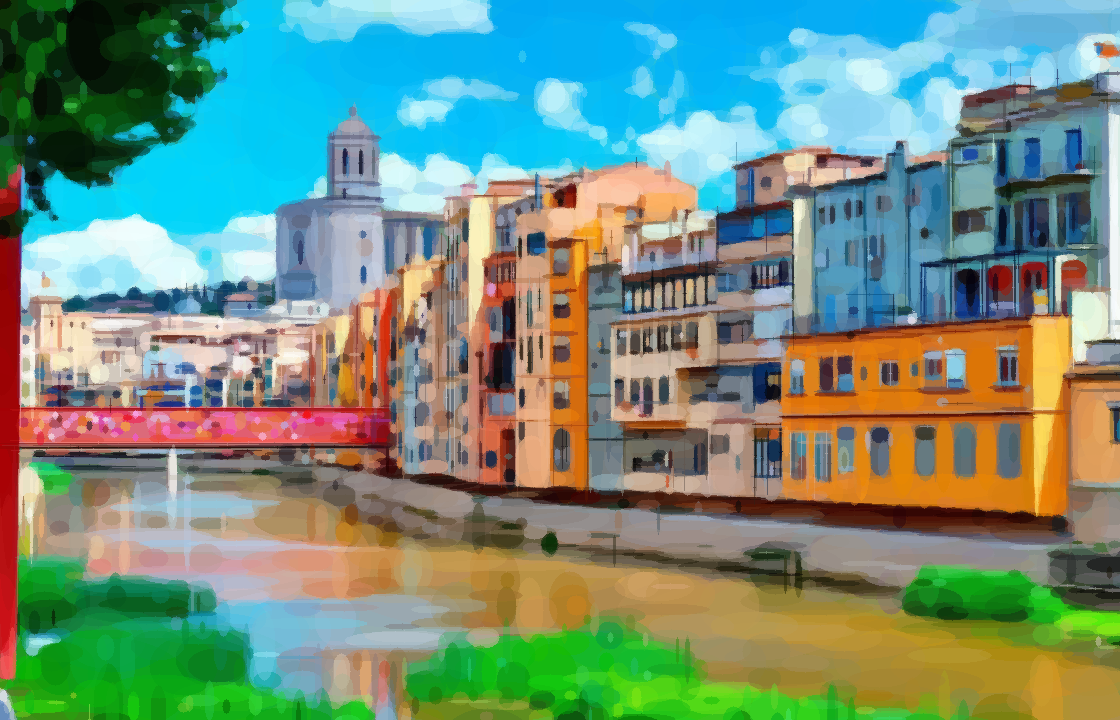Introduction
Build
Execution
Gallery
Notes
Final Result
This project aims to reproduce an image using geometric primitives (triangles or ellipses). The algorithm takes an input image and tries to minimize the difference between the input image (or target) and the generated image (or current) by adding geometric shapes. To calculate the difference between two images I use the RSME (Root-Square Mean Error) between the colour components of each pixel.
In order to find a good primitive the algorithm generates several random shapes and picks only the best of them. Then, it applies a mutation (a change) to the primitive. A mutation can be changing one vertex position on X or Y, or changing the ellipses radius, etc...If this mutation has improved the difference between the images and makes them more similar we keep it. This step is performed several times until a certain condition is met (for example, the number of mutations). This process is known as Hill Climbing. Since Hill Climbing can easily get stuck in local minimums, we actually performed all this process on each thread. This way, the probability of falling in a local minimum is lower. After all, we end up with one primitive per each thread and we pick only the best one of them. This best shape will be added to the current image and the process will start again until a certain number of primitives had been added to the image.
This cute Dog is generated with 500 triangles:
This project has been developed under Windows and using VS 2017. However, no project files are included in the repository. Thus, anyone can build the project using CMake and different generators.
In order to generate project files for Visual Studio:
// VS 2017
git clone git@github.com:mtrebi/ImagesPrimitives.git
cd ImagesPrimitives
mkdir build
cd build/
cmake .. "Visual Studio 15 2017 Win64"To build the project for any other IDE, just look for the specific CMake generator keyword.. For Linux, the build instructions differ slightly:
// VS 2017
git clone git@github.com:mtrebi/ImagesPrimitives.git
cd ImagesPrimitives
mkdir build
cd build/
cmake ..
makeThen, from Visual Studio you can edit and execute the project. Make sure that main project is set up as the startup project
After building the executable you can execute it using the following arguments.
| Flag | Default | Description |
|---|---|---|
i |
n/a | Directory of target image in bmp format |
o |
n/a | Directory of output image in bmp format |
g |
0 | Outputs a sequence of images to create a Gif |
t |
4 | Number of threads to be used |
s |
1000 | Number of random states generated |
c |
100 | Number of Hill Climb steps |
m |
1000 | Maximum number of Hill Climb evaluations. |
r |
16 | Maximum random used for generations/mutations |
a |
128 | Alpha value used for geometric primitives |
n |
250 | Number of geometric primitives used |
p |
0 | Geometric primitive used. 0 - Triangles, 1 - Ellipses |
Example images generated with my code:
- This project is based on primitive, a Go library created by Michael Fogleman.
- It is also based on Geometrize Haxe, a Haxe library created by Sam Twidale
- This project has far less features than the previous libraries. This is because goal of this project was to generate an image, print it on a canvas and give it to my girlfriend as a present for her birthay.
This is the result of generating an image with this code and printing it directly on a canvas:
